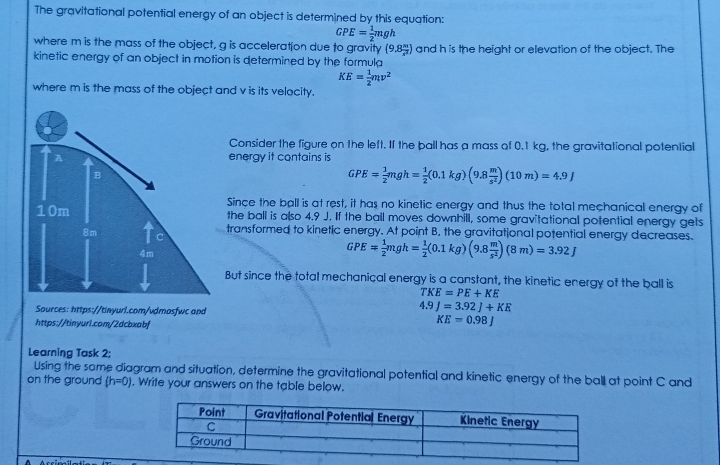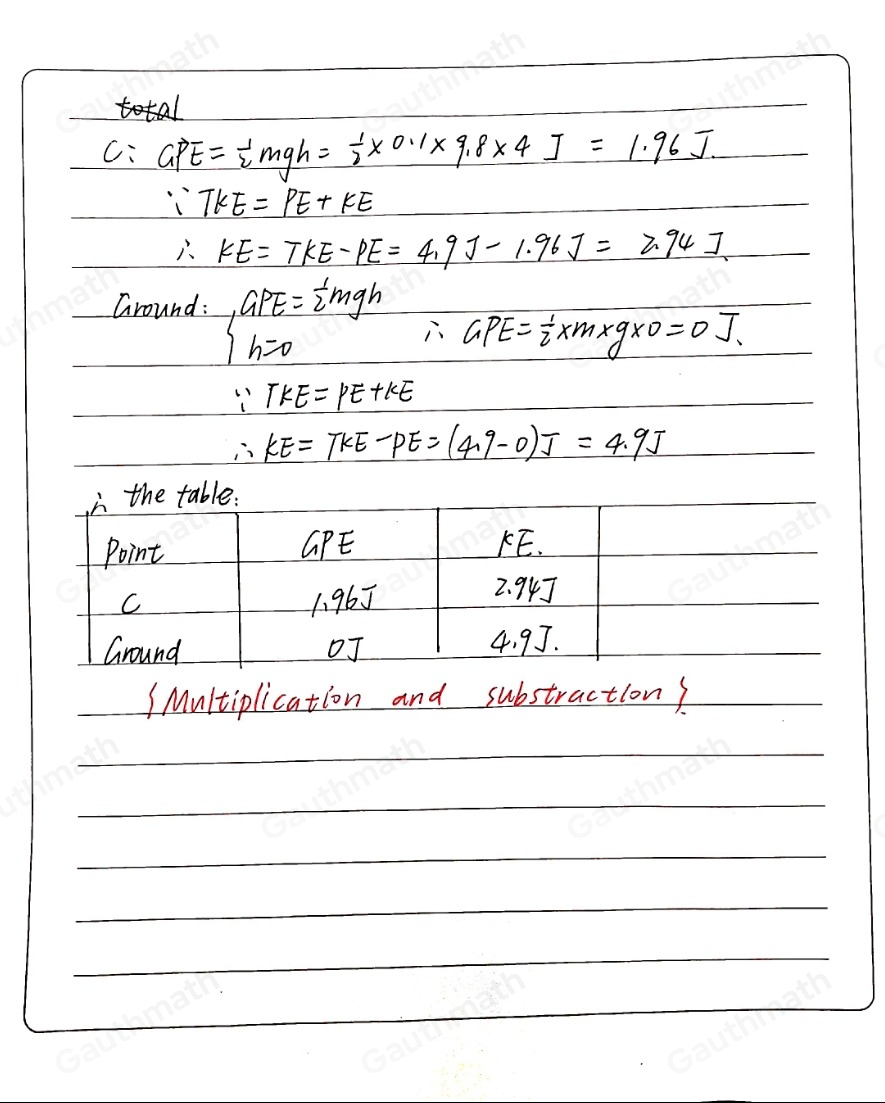The gravitational potential energy of an object is determined by this equation: GPE= 1/2 mgh where m is the mass of the object, g is acceleration due to gravity 9.8% and h is the height or elevation of the object. The kinetic energy of an object in motion is determined by the formula KE= 1/2 mv2 where m is the mass of the object and v is its velocity. Consider the figure on the left. Il the pall has a mass of 0.1 kg, the gravitational potential energy it contains is IPE= 1/2 mgh= 1/2 0.1 kg9.8frac ms210 m=4.9J Since the ball is at rest, it has no kinelic energy and thus the total mechanical energy of the ball is also 4.9 J. If the ball moves downhill, some gravitational potential energy gets transformed to kinetic energy. At point B, the gravitational potential energy decreases. GPE= 1/2 mgh= 1/2 0.1 kg9.8frac ms28 m=3.92 J But since the total mechanical energy is a canstant, the kinetic energy of the ball is TKE=PE+KE Sources: https://tinyurl.com/vdmosfwc and 4 9J=3.92J+KK https://tinyurl.com/2dcbxabf KE=0.98 Learning Task 2; Using the same diagram and situation, determine the gravitational potential and kinetic energy of the ball at point C and on the ground h=0 . Write your answers on the table below..
Question


